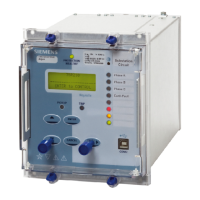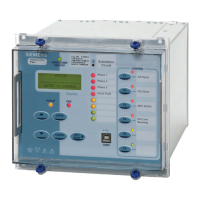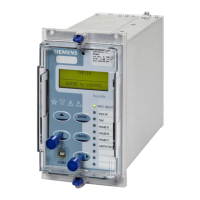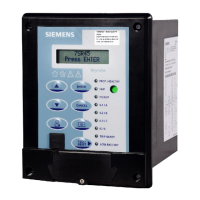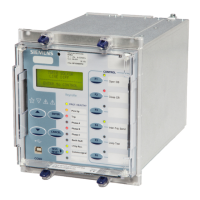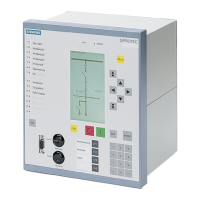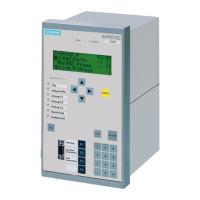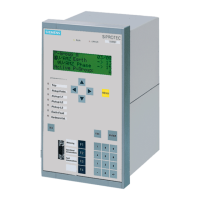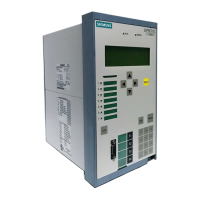7SR242 Duobias Description Of Operation
©2010 Siemens Protection Devices Limited Chapter 1 Page 21 of 52
3.1.2 Overall Biased Differential (87BD)
87BD Initial
Setting
1
st
Bias
Slope
Limit
Bias (Restraint) Current
2
II
W2W1
+
8
7
B
D
1
s
t
B
i
a
s
S
l
o
p
e
2nd Bias
Slope Type
W2W1
II +
I
W1
I
W2
Figure 3-1 Biased Differential Characteristic
Figure 3.1-1 illustrates the biased differential characteristic. Within the relay the fundamental frequency RMS line
currents are modified by the ICT Multiplier and ICT Connection settings (see 3.1.1) before being applied to the
biased differential elements. The biased differential elements calculate the operate current for each phase from
the vector sum of winding 1 and winding 2 currents i.e. I
OPERATE
= I
W1
+ I
W2
. The bias (or restraint) current is
calculated from the total current of winding 1 and winding 2 currents i.e.
2
II
I
W2W1
RESTRAIN
+
=
.
The 87BD Initial setting defines the minimum differential current required to operate the relay.
The 87BD 1
st
Bias Slope setting is used to ensure protection stability in the presence of steady state errors e.g.
the effects of an on-load tap changer.
The 87BD 1
st
Bias Slope Limit setting defines the border between the 1
st
and 2
nd
bias slopes.
87BD 2
nd
Bias Slope Type setting allows the user to select the preferred characteristic shape i.e. Line or Curve.
The 87BD 2
nd
Bias Slope setting is applied when 87BD 2
nd
Bias Slope Type = Line. This setting is used to
modify the sensitivity of the differential algorithm at higher current levels.
The output of 87BD Delay can be mapped to relay outputs.
Operation of the biased differential elements can be inhibited from:
Inhibit 87BD A binary or virtual input.
87BD Inrush Action: Inhibit Operation of the inrush current detector
87BD Overfluxing Action: Inhibit Operation of the overfluxing detector

